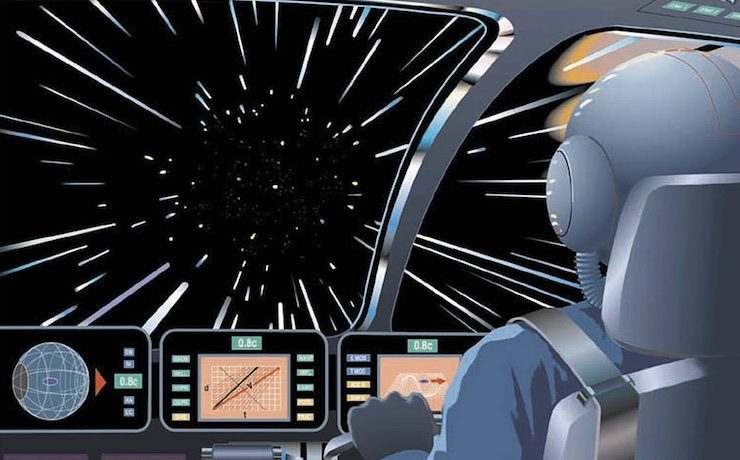As discussed in this 2018 piece, relativistic starflight can put the entire universe within one’s reach (assuming that one has access to mind-boggling amounts of energy and commands utterly implausible technology). But as that essay points out, relativistic starflight is also a form of time travel, which often works out badly for all involved.
For example…
Childhood’s End by Arthur C. Clarke (1953)
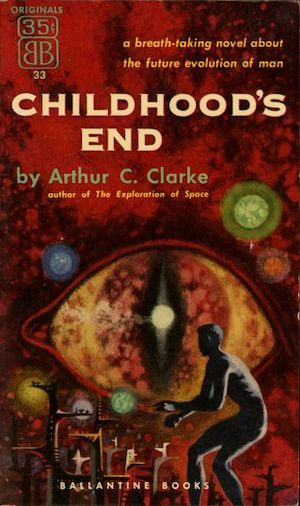
The Overlords who took control of the Earth command impressive technologies, none of which permit them to sidestep speed-of-light limits. Accordingly, when Jan Rodricks stows away on an Overlord vessel bound for NGS 549672, his round trip lasts only a few months. In the meantime, eighty years pass on Earth.
Jan can’t stop what’s happening on Earth; he has as much power as an individual snowflake caught in an avalanche already in motion. All he can do is give the Overlords a human perspective on events.
***
The Long Way Home (AKA No World of Their Own) by Poul Anderson (1955)
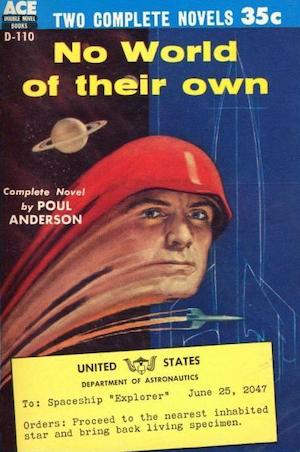
Having successfully developed a faster-than-light drive, the United States of America dispatched a bold quartet of explorers across the galaxy. Several thousand light-years later, the Explorer returns to Earth, where its unfortunate crew discovers that while each jump may have been instantaneous to them, it was only speed-of-light to the universe. Thousands of years have passed since they left.
A boatload of relics is nothing new to a civilization that arose in the context of easy lightspeed travel. But while the ancient Americans are merely a curiosity, the alien ambassador they brought home with them is another matter.
***
Houston, Houston, Do You Read? by James Tiptree, Jr. (1976)
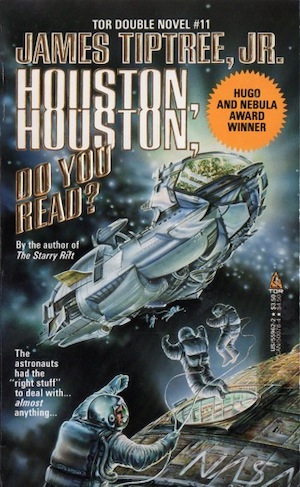
The Sunbird loses contact with Earth while circumnavigating the Sun. Initially, the three men on board assume that a solar flare knocked out their communications. Only after making contact with another space vessel do they learn the truth: whatever happened to them cast their ship across time and space.
The human society of the future arose, as so many societies of the future do, from the ashes of the past. Catastrophe swept away the old order, including all men. Human society is now exclusively female. The crew of the Sunbird are the first men seen since the rise of the current civilization. How can these curious relics be integrated into modern society?
***
Beloved Son by George Turner (1978)
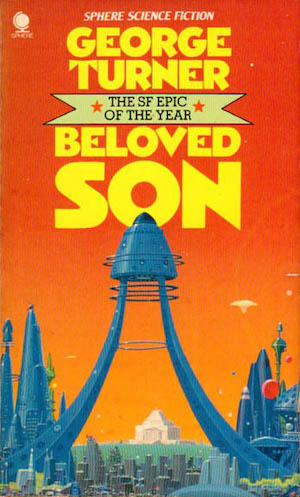
Commander Albert Raft and his crew return from a forty-year interstellar voyage to discover that the old world order has annihilated itself. After great sacrifices, a new world order, the Ethical Culture, has re-established a stability (of sorts). The 21st-century Earth to which the voyagers return is lethal to most of the crew, but the planet-bound seem to lead stable and peaceful lives…
“Seem to lead” being the operative words: Raft and the carefully suppressed secrets that provoked his forty-year trip are just the sort of disruptive element that will establish whether the Ethical Culture truly works. Or doesn’t.
***
Flies From the Amber by Wil McCarthy (1995)
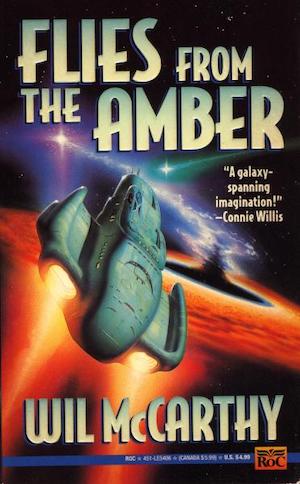
Long before humans mastered relativistic starflight, an alien race managed the same feat with technology that made ours look like toys. Although difficult to recognize as artifacts, the aliens left evidence of their conflicts all across the Malhelan system, forty light-years from Earth. The transformed materials are a curiosity, enough to attract a scientific mission from Earth.
Among the Malhelan system’s curious features: a stellar-mass black hole. The same technologies that permitted the aliens to travel from star to star also facilitated surviving the conditions near a black hole. Mere moments for the combative aliens have been thousands of years for the external universe, which means the humans are about to get ringside seats for a space war fought with incomprehensible energies and no regard for the concept of innocent bystanders.
***
No doubt each of you owns a stack of books touching on this theme that you are astounded that I failed to mention. The comments are, as ever, below.
In the words of Wikipedia editor TexasAndroid, prolific book reviewer and perennial Darwin Award nominee James Davis Nicoll is of “questionable notability.” His work has appeared in Publishers Weekly and Romantic Times as well as on his own websites, James Nicoll Reviews and Young People Read Old SFF (where he is assisted by editor Karen Lofstrom and web person Adrienne L. Travis). He is a four-time finalist for the Best Fan Writer Hugo Award and is surprisingly flammable.










